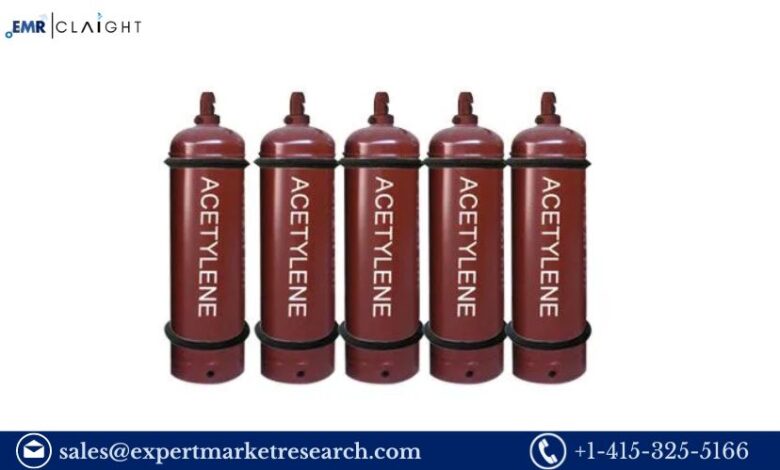
Table of Contents
ToggleIntroduction
Acetylene gas, a colorless and highly flammable hydrocarbon, is an essential raw material in various industries, primarily in welding, cutting, and chemical synthesis. Its production and application are pivotal in sectors such as metal fabrication, pharmaceuticals, and agriculture. This article provides a comprehensive overview of an acetylene gas manufacturing plant project report, including market analysis, production processes, equipment requirements, financial projections, and challenges.
Market Analysis
Industry Overview
The acetylene market has witnessed steady growth over the past decade. According to industry forecasts, the global acetylene market is projected to reach approximately $7 billion by 2027, driven by the demand from welding and cutting applications. The construction and automotive industries are significant contributors to this growth.
Target Market
Acetylene gas serves a variety of sectors, including:
- Welding and Cutting: Widely used for oxy-acetylene welding and cutting processes.
- Chemical Manufacturing: Acts as a precursor in producing various chemicals, such as acetic acid and acrylic fibers.
- Agriculture: Used in the synthesis of plant growth regulators.
Competitive Landscape
The acetylene market features several key players, including Air Products and Chemicals, Linde Group, and Praxair. Understanding their product offerings, pricing strategies, and distribution channels can help identify market opportunities and challenges for new entrants.
Production Process
Raw Materials
The primary raw materials for acetylene production include:
- Calcium Carbide: The main ingredient, produced from limestone and coke.
- Water: Used to react with calcium carbide to produce acetylene gas.
Manufacturing Steps
- Calcium Carbide Production:
- Limestone and coke are heated in an electric furnace at high temperatures (around 2000°C) to produce calcium carbide.
- Acetylene Generation:
- Calcium carbide is reacted with water in a controlled environment: CaC2+2H2O→C2H2+Ca(OH)2\text{CaC}_2 + 2 \text{H}_2\text{O} \rightarrow \text{C}_2\text{H}_2 + \text{Ca(OH)}_2CaC2+2H2O→C2H2+Ca(OH)2
- This reaction produces acetylene gas and calcium hydroxide as a byproduct.
- Gas Purification:
- The generated acetylene gas is passed through scrubbers to remove impurities and moisture, ensuring high purity.
- Storage and Distribution:
- Acetylene is stored in high-pressure cylinders or tanks for distribution to end-users.
Equipment Requirements
Setting up an acetylene gas manufacturing plant necessitates various equipment, including:
- Electric Furnace: For producing calcium carbide.
- Reactor Vessel: For the reaction between calcium carbide and water.
- Scrubber System: For purifying acetylene gas.
- Compression and Storage Units: For storing acetylene in cylinders.
- Safety Equipment: Essential for handling flammable gases, including flame arrestors and safety valves.
Investing in quality equipment is crucial for ensuring safety and operational efficiency.
Financial Projections
Initial Investment
The initial investment for an acetylene gas manufacturing plant can vary widely based on the scale of operations and location, typically encompassing:
- Machinery Costs: $500,000 – $2,000,000.
- Facility Setup: $200,000 – $800,000.
- Raw Materials: $100,000 – $300,000.
- Operational Costs: Monthly expenses for labor, utilities, and maintenance.
Revenue Streams
Revenue generation can be achieved through:
- Direct sales to industrial clients.
- Contract manufacturing for larger companies.
- Supplying to distributors and retailers.
Profitability
The profit margins for acetylene gas can range from 15% to 30%, depending on market conditions and production efficiencies. A well-structured business plan can facilitate a return on investment within 2-4 years.
Regulatory Compliance
Acetylene production involves stringent regulatory requirements, including:
- Occupational Safety and Health Administration (OSHA) Standards: Ensuring workplace safety in handling flammable materials.
- Environmental Protection Agency (EPA) Regulations: Addressing emissions and waste management.
- Local Safety Codes: Compliance with state and local regulations governing gas production and storage.
Adhering to these regulations is critical for maintaining operational integrity and safeguarding employees.
Challenges and Solutions
Market Competition
The acetylene market is competitive, with established players holding significant market share. New entrants should focus on niche markets or specialized applications to differentiate themselves.
Supply Chain Issues
The supply of raw materials, particularly calcium carbide, can be affected by global market fluctuations. Establishing strong relationships with suppliers and diversifying sourcing strategies can help mitigate these risks.
Safety Concerns
Handling acetylene involves inherent safety risks due to its flammability. Implementing comprehensive safety training and adhering to best practices can minimize accidents and enhance employee safety.
FAQs
1. What is acetylene gas used for?
Acetylene is primarily used in welding and cutting processes, chemical manufacturing, and as a raw material in the agricultural sector for synthesizing plant growth regulators.
2. How much investment is needed to start an acetylene manufacturing plant?
Initial investments typically range from $500,000 to over $2 million, depending on the scale and location of the facility.
3. What are the major raw materials for acetylene production?
The main raw materials are calcium carbide and water.
4. What is the expected profit margin for acetylene gas?
Profit margins can range from 15% to 30%, depending on production efficiencies and market dynamics.
5. Are there specific regulations for manufacturing acetylene gas?
Yes, manufacturers must comply with OSHA, EPA, and local safety codes related to gas production and handling.
Related Reports
https://www.expertmarketresearch.com/reports/remote-sensing-software-market
https://www.expertmarketresearch.com/articles/top-plywood-companies
https://www.expertmarketresearch.com/reports/united-states-flooring-market
Media Contact:
Company Name: Claight Corporation
Contact Person: Lewis Fernandas, Corporate Sales Specialist — U.S.A.
Email: sales@expertmarketresearch.com
Toll Free Number: +1–415–325–5166 | +44–702–402–5790
Address: 30 North Gould Street, Sheridan, WY 82801, USA
Website: www.expertmarketresearch.com
Aus Site: https://www.expertmarketresearch.com.au




